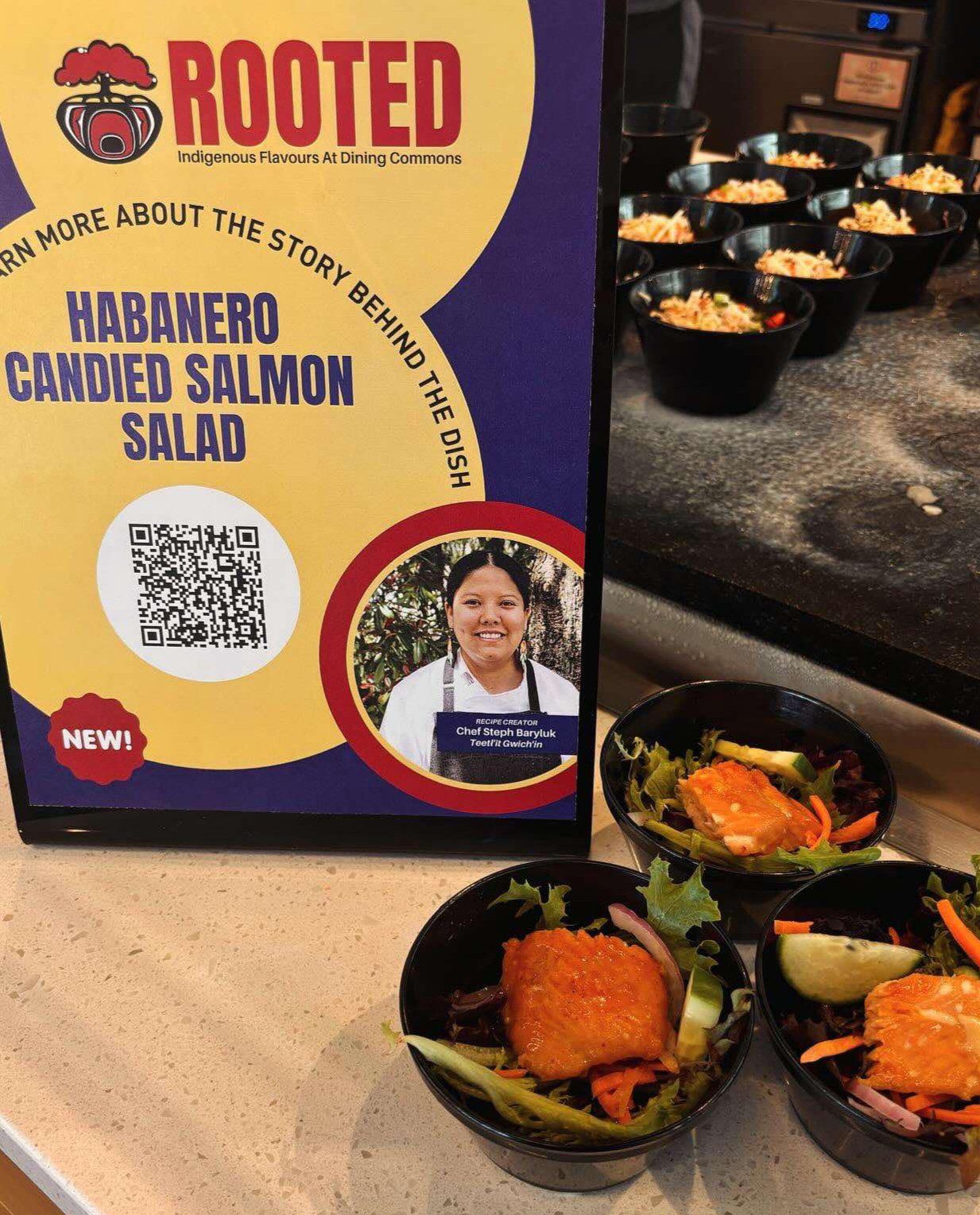“‘Jàk’ means berries, ‘Łuk’ means fish,” said Teetl’it Gwich’in Stephanie Baryluk, a Red Seal chef and cultural educator who has travelled the world sharing a taste of the North.
Coinciding with NWT’s Indigenous Languages Month, Baryluk partnered with the Gwich’in Tribal Council (GTC) to host a language-learning cookout in Fort McPherson, Tsiigehtchic, Aklavik, and Inuvik.
“It’s important that we put language into everything that we do,” she said. “I have such a deep respect for our Gwich’in culture, so being able to cook for an event like this means a lot to me.”
Baryluk prepared different menus for each community, using local ingredients. Dishes include bannock trifle, fish cake made with white fish, muskox tacos, and a Delta charcuterie board, which consists of fried bannock, Indigenous-produced jam, dry fish, moose, and jerky.

On Inuvik’s language cookout menu: muskox tacos, enchiladas, tomato rice, and fried bannock with jam. (Photo courtesy of Gwich’in Tribal Council)
“A few kids participated in producing the menu items with me, and some of them wanted to stay right through, which is almost a six-hour day in the kitchen,” Baryluk said with a laugh.
“For them to see and know Gwich’in chef doing these things can hopefully inspire them to do the things they want to do and go as far as they want to.”

Baryluk prepares a four-course meal in Inuvik, with the help of four students from the East Three Elementary School. (Photo courtesy of Stephanie Baryluk)
The event was made possible through the efforts of Janelle Wilson, Baryluk’s childhood friend, who works in language revitalization for the GTC.
“We’re very proud of Steph, she is a great role model for Gwich’in and other Indigenous people, so we wanted to showcase her in our communities,” said Wilson.
“The language circle we did included phrases about cooking or making that you can easily use at home,” she said. “It’s just a great safe space to speak Gwich’in and see others doing the same thing, which brings their confidence level up so much more to be able to speak.”
At Vancouver’s Simon Fraser University (SFU) where she works as a chef and recipe creator, Baryluk continues weaving Indigenous language into her work. She developed a program called Rooted, which introduces fusion Indigenous cuisine to the campus’s 1,400 daily diners. Each dish comes with a QR code linking to its history, cultural significance, and Indigenous name.

“Being a professional chef allows me to merge the skills I’ve gained in the culinary industry to our traditional food and sharing recipes,” said Baryluk. (Photo courtesy of Stephanie Baryluk)
“Wherever I could use our language through my work, I’ll use it,” said Baryluk. “I think it’s important, even if people don’t fully understand how to say it or what it means, it’s still being shared.”
“It’s who we are,” she said. “It goes right back to our history, what our people ate what our people harvested, and how they used different preservation methods, and all the lessons that came along with it.”
Baryluk will soon launch a new company that teams up with other professional chefs to promote Indigenous food knowledge, culture, and wisdom to address issues such as food waste, climate change and malnutrition. It’s called ‘Nihkhah’, which means ‘together’ or ‘gathering’ in Gwich’in.
“I’ve been doing a lot of work all throughout Canada and globally, but to be able to come home to the Northwest Territories is something I hope I get to do more of,” said Baryluk.





